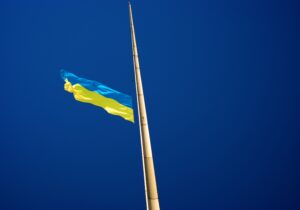Surrounded. Contained. Encircled. These feelings are often evoked at a national level by leaders who view their country as being unfairly targeted by its neighbors. This fear of encirclement has long been a part of international affairs, but it is just one of myriad strategic anxieties that a state may face. These grand strategic worries – sometimes legitimate, sometimes irrational – skew perceptions about geopolitical reality. They can be leveraged to achieve foreign policy goals, but can also propel government action in unintended directions.
The strategic anxiety of encirclement is particularly pernicious as it comes with a vicious cycle of actions and reactions which exemplify the security dilemma. The power fearing encirclement will act to expand its reach so as to break out; its neighbors will see these aggressive actions and react by banding together for defense; the anxious power will see this as confirmation of encirclement and increase aggression. This self-reinforcing process significantly impacts a nation’s foreign policy outlook and harms national security. Nations are particularly susceptible to encirclement paranoia based on geography and history, with modern China and Russia fitting that bill. We can learn about the potential impact of their strategic anxieties through an understanding of historical analogs.
Russia has a deep tradition of encirclement anxiety, and its instantiation in Putin’s Moscow is merely a new spin on an old tale. During the days of the Mongol Yoke, Russians chafed under foreign rule. After Moscow’s assertion of regional dominance, its leaders refused to submit to a repeat of the past, orienting its foreign policy towards expanding its borders away from its Muscovite heartland. To Russian strategists, encirclement would stop this necessary expansion and portend conquest.
Imperial Russia sought to create buffer zones and gain consistent access to the sea in order to ensure its ability to break out of any encircling attempt. That meant consolidating its hold over Ukraine, partitioning Poland, and pushing into Siberia and the Caucasus. In the 19th century, this was seen in two theaters: the Straits question and the Afghan boundary dispute. In the former, Russia was looking for uninterruptible access to the Mediterranean via the Turkish straits; this stoked multiple wars, Crimea and the Russo-Turkish being the most notable. The Afghan boundary dispute was part of the Great Game between Britain and Russia, where each empire sought buffer zones to protect its holdings. Both of these Russian efforts at breaking encirclement raised tensions.
The Soviet Union changed targets, but the paranoia remained. Dual narratives of encirclement were promoted, depending on the situation. Before World War II, the USSR feared encirclement by Germany, Poland, and Japan. Russians had fought all three recently – Germany in 1914, Japan in 1904, and Poland in 1920 – but not in concert. The German-Polish and the German-Japanese agreements were defensive in nature, driven by fear of an internationalist Soviet Union. To break its supposed encirclement, the USSR signed the Molotov-Ribbentrop Pact with Germany – a temporary peace that quickly brought war. After 1945, it returned to an earlier encirclement narrative by centering hostile capitalists. This fear, mostly of America, led to the forced refusal of Marshall Plan aid and the dropping of the Iron Curtain. This, in turn, led the West into a stronger posture of containment, once again reducing Russian security.
Vladimir Putin has renewed this posture in the 21st century, claiming that NATO expansion has always been intent on Russia’s encirclement. Despite the fact that NATO is a defensive alliance and its newest members are historic targets of Russian expansionism, Moscow perceives it as aggressively anti-Russian. This logic has been used most destructively in Ukraine. In the 2014 speech annexing Crimea, Putin linked his strategic anxiety to Russia’s past, saying “we have every reason to assume that the infamous policy of containment, led in the 18th, 19th and 20th centuries, continues today.” Putin sees Western interest in Ukrainian sovereignty as an act of aggression, something repeated in the 2022 invasion, which he also sought to justify as a response to NATO encirclement. Given the battlefield results, this instance has echoed the past, diminishing Russian security.
China’s encirclement anxiety is best understood not through its own past, but that of Imperial Germany. There are several similarities between the two rising powers: their traditionally continentalist strategy, their construction of Bluewater navies, their historical grudges, and their hegemonic aspirations. The biggest link, however, is their shared perception of encirclement.
Germany, due to its location, had long felt cramped by surrounding powers. After the Wars of Unification, the German Empire acutely sensed the potential for hostile encirclement. Its genius statesman, Otto von Bismarck, deftly neutralized his potential rivals: allying with Austria-Hungary, promoting French colonial expansion to distract from Alsace-Lorraine, and signing the secret Reinsurance Treaty with Russia. This balancing act was, like so much else, unique to Bismarck, and collapsed after his defenestration by Kaiser Wilhelm II. The expansionist, belligerent Weltpolitik – a policy in part meant to avoid encirclement – represented by the Kaiser and Chancellor Bernhard von Bülow, antagonized other major European powers.
According to historian Dennis Showalter, “By 1908 at the latest, encirclement, Einkreisung, had evolved from worst-contingency nightmare into everyday reality.” This was clear after the 1906 Algeciras Conference, where a German gambit over Morocco embarrassingly failed to garner any support beyond Austria’s. Chancellor Bülow said before the Reichstag:
A policy aiming at the encirclement of Germany and seeking to form a ring of Powers in order to isolate and paralyze it would be disastrous to the peace of Europe. The forming of such a ring would not be possible without exerting some pressure. Pressure provokes counter-pressure. And out of pressure and counter-pressure finally explosions may arise.
In this moment, Bülow described the fatal logic of encirclement but shifted the onus externally instead of correctly seeing it as internal. Weltpolitik drove the Franco-Russian alliance and fear of German aggression led Britain to settle its territorial disputes with those two long-time adversaries. These ententes were defensive in nature, but paranoid German strategists saw them as deliberate attempts at encirclement.
On the eve of the Great War, the Kaiser saw his anxiety manifest, but still refused his own part in its realization:
So the celebrated encirclement of Germany has finally become an accomplished fact, in spite of all the efforts of our politicians to prevent it. The net has suddenly been closed over our head, and the purely anti-German policy which England has been scornfully pursuing all over the world has won the most spectacular victory.
Xi Jinping’s China is treading that same well-worn path, substituting America for Britain. As China has risen economically, its leaders – Xi in particular – have sought a commensurate increase in geopolitical power. In part, this is meant to avenge the ‘century of humiliation’ during which China was economically colonized by Western powers and stripped of its sphere of influence. Xi and his cadre fear that the United States and its regional allies seek to encircle China and stop it from reclaiming its historic identity as the Middle Kingdom.
To break this perceived cordon sanitaire, China has engaged in belligerent regional activities: militarizing islands in the South China Sea, harassing civilian boats in international waters, and threatening Taiwan. The Chinese Communist Party has adopted a policy of ‘active defense’ of the area it claims as its historic domain; this is merely a cover for expansionism. China’s neighbors have reacted accordingly, aligning with the primary world power, the U.S., to defend their sovereignty. China views these protective moves as bellicose, heightening its fear of encirclement.
This is reflected in Chinese rhetoric around recent events. The new American bases in the Philippines, the warming of relations between Japan and South Korea, and the AUKUS nuclear submarine deal have heightened worries in Beijing. In early March, Xi Jinping expressed this anxiety, stating that “Western countries led by the United States have carried out all-round containment, encirclement and suppression of China, which has brought unprecedented severe challenges to China’s development.” China’s foreign minister Qin Gang echoed the sentiment: “Containment and suppression will not make America great. It will not stop the rejuvenation of China.” He warned of “conflict and confrontation,” in an eerily similar tone to Bülow. Some in China have noticed this security dilemma, but the CCP seems poised to continue down the primrose path.
These fears of encirclement – historic and modern – begin as irrational, but emerge into reality when the anxiety is indulged. Expansionist actions to counter perceived encirclement cause rational reactions which feed the initial fear in a continuous cycle. In the case of Russia and China, the U.S. should continue with its own policy of building regional defensive partnerships, refusing to indulge these bogus concerns. Even if dictators like Putin and Xi view this as containment, their worries do not override the security choices of their sovereign neighbors. The powers that fear encirclement seek expansion; American strategists should not buy into their false narrative.






 Sponsor a student for Christianity & National Security 2024
Sponsor a student for Christianity & National Security 2024